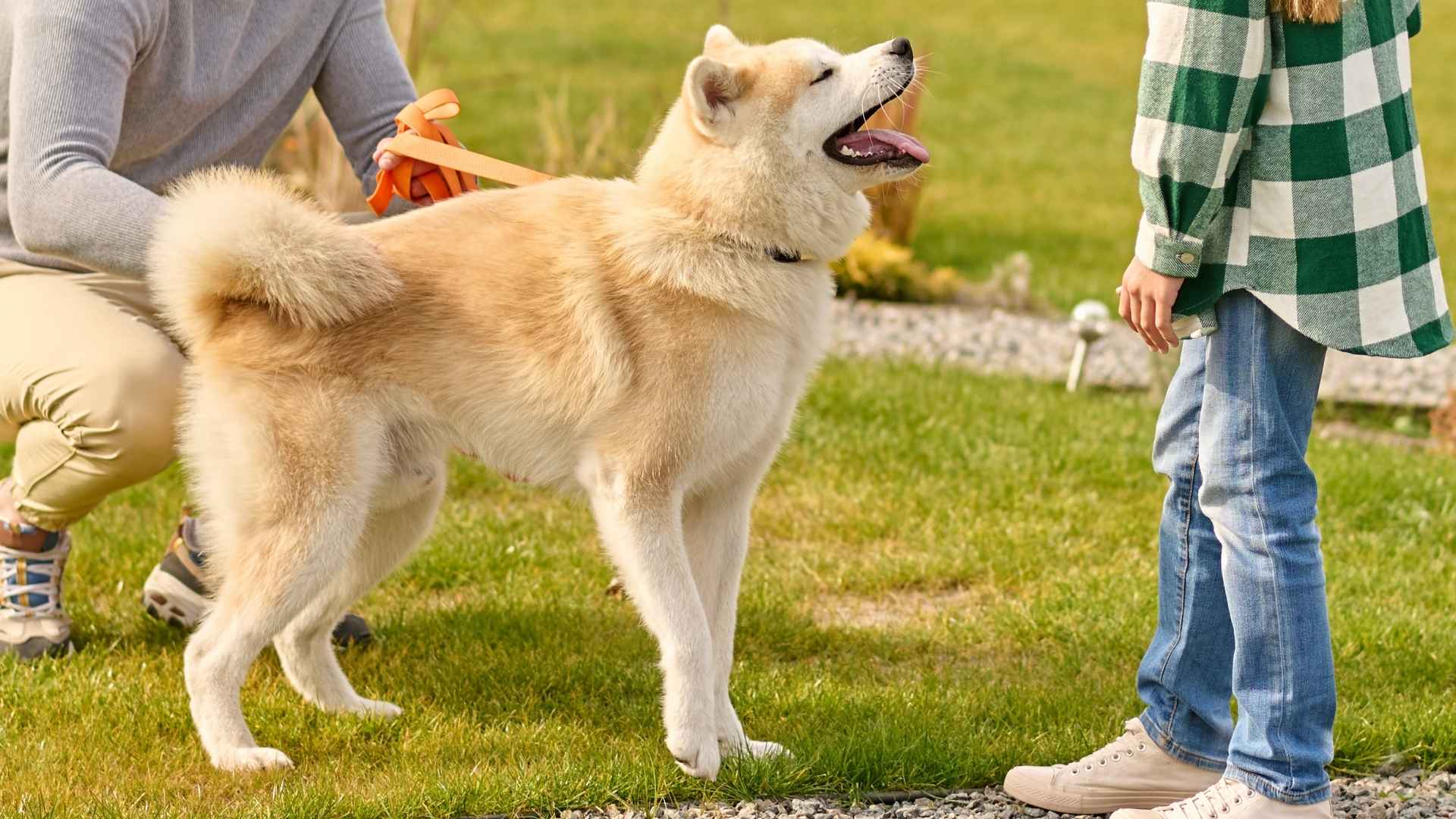In many homes, the lively sounds of children talking and laughing often blend with the playful energy of their furry companions. Dogs, with their expressive tails and intuitive nature, frequently become cherished members of the family, forging deep connections with even the youngest family members.
Certain dog breeds, thanks to their friendly dispositions and keen social awareness, are especially responsive to children’s voices, often wagging their tails with unmistakable enthusiasm when kids speak to them. These tail wags represent an authentic, joyful response and an eagerness for companionship.
Understanding the breeds most attuned to children’s voices can help families select the right canine friend, creating lasting bonds filled with warmth and mutual affection.
This article explores seven remarkable dog breeds that consistently show delight when engaged by children, offering insight into their unique temperaments, historical backgrounds, and the subtle ways they enrich family life.
Dog Breeds That Wag Tails When Kids Talk To Them
1. Pug

The Pug is instantly recognizable with its wrinkled face, curled tail, and endearing round eyes. These dogs are natural comedians, often delighting children with their playful antics and expressive personalities. Pugs thrive on affection and eagerly join in on whatever activity children are doing, from playtime to quiet moments on the couch.
Despite being a toy breed, Pugs are surprisingly sturdy and well-suited for households with energetic kids. Their tolerant nature allows them to handle boisterous play, and they rarely snap or shy away from attention.
Socialization comes easily to Pugs—they’re happiest as the center of a lively family and often shadow children throughout the home, wagging their tails at the sound of young voices.
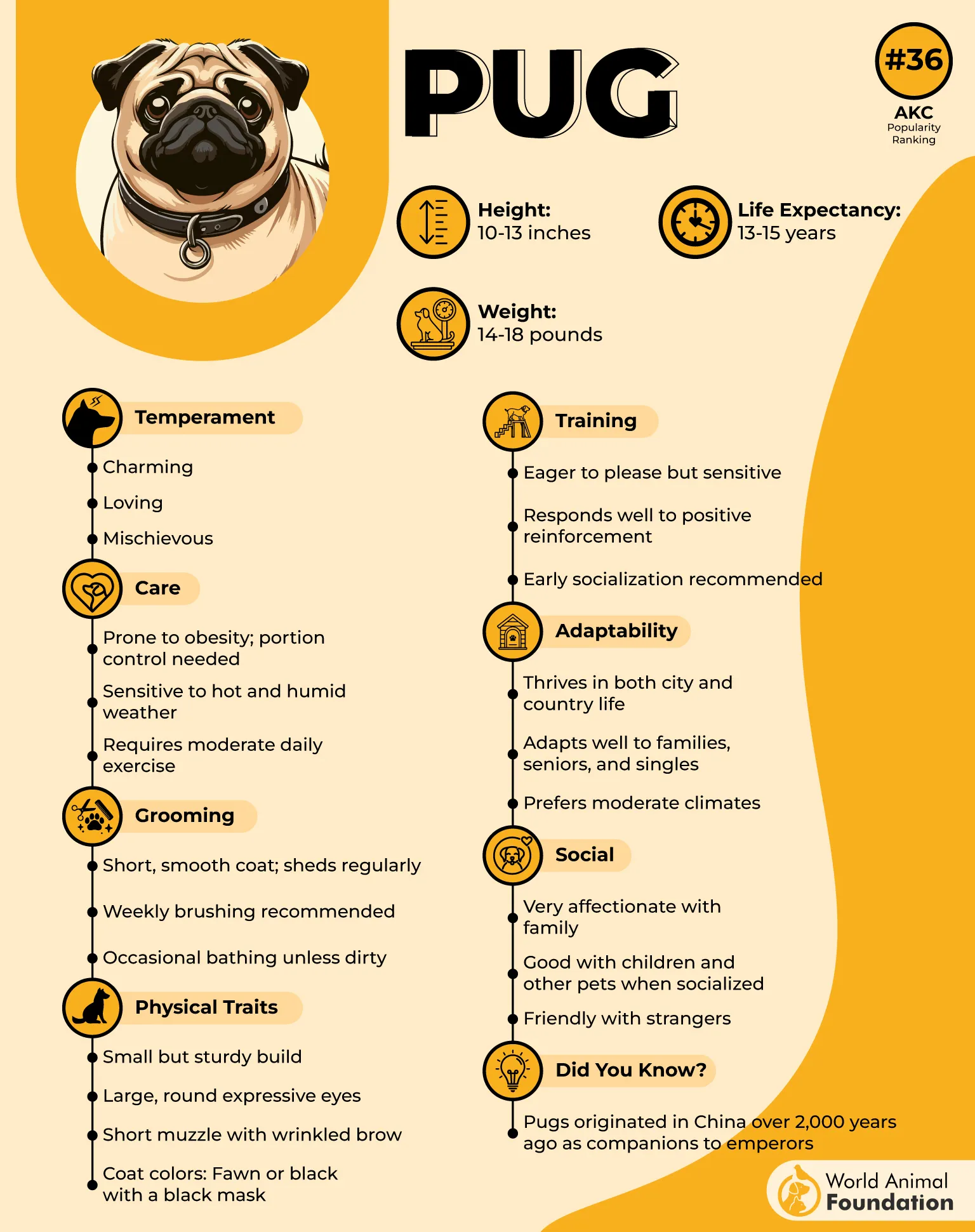
As per WebMD, a notable feature of the Pug is its strong desire for companionship; this breed dislikes being left alone for long periods and can become anxious if isolated.
They communicate their moods through a range of snorts, grunts, and animated tail wags, making it easy for kids to bond and understand their pet’s feelings. Pugs are intelligent but can be stubborn, so short, fun training sessions with treats work best.
Regular grooming is a must, as Pugs shed quite a bit for their size. Families should also be mindful of their breathing sensitivities, especially during warm weather or strenuous play.
Quick Tips
Walks are best in cool weather due to their brachycephalic (short-nosed) structure.
Make training sessions upbeat and rewarding.
Clean facial wrinkles often to prevent irritation.
2. Cavalier King Charles Spaniel
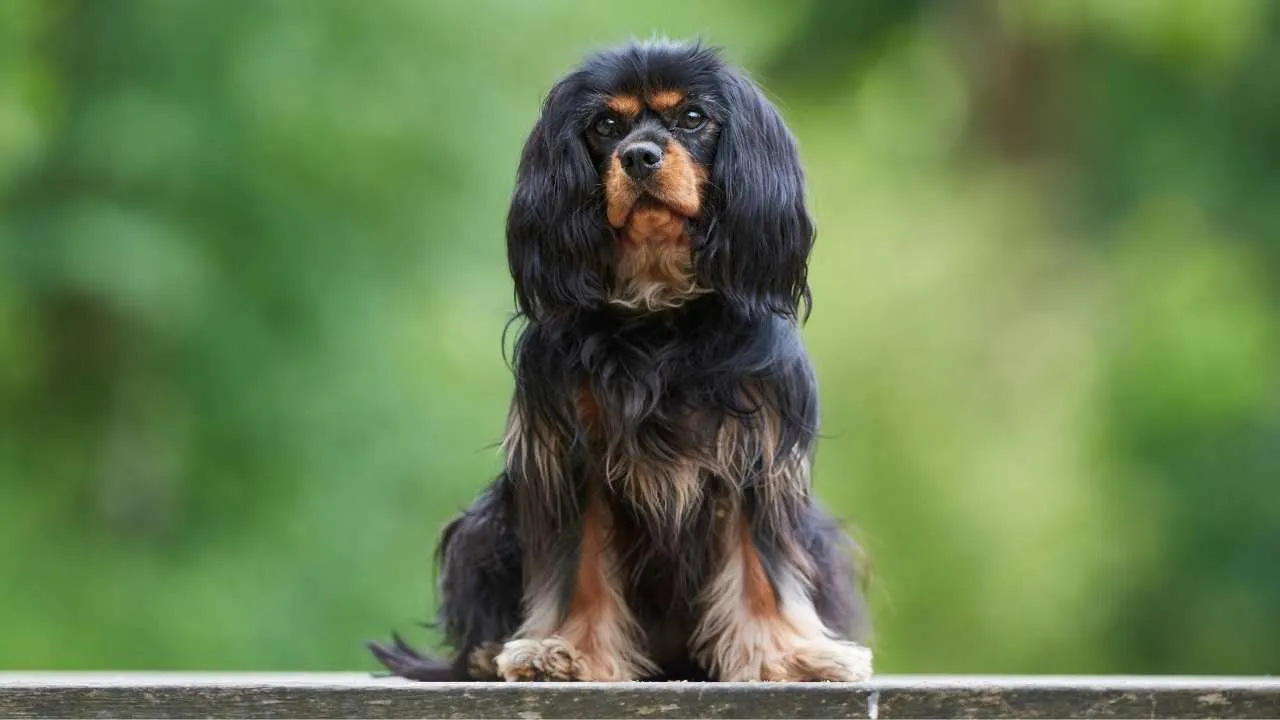
With their silky coats, soulful eyes, and feathered ears, Cavaliers bring a gentle and charming presence to any home. These dogs are known for forming strong attachments to children, often gravitating to their favorite family member for companionship and play. Cavaliers are natural listeners, quickly picking up on a child’s mood and responding with affection or excitement.
Their balanced temperament means Cavaliers are comfortable both during energetic games and relaxed downtime, adapting smoothly to a household’s routine. Although they are considered a toy breed, they’re surprisingly sturdy, and their playful, agile nature makes them great partners for outdoor fun or indoor adventures.
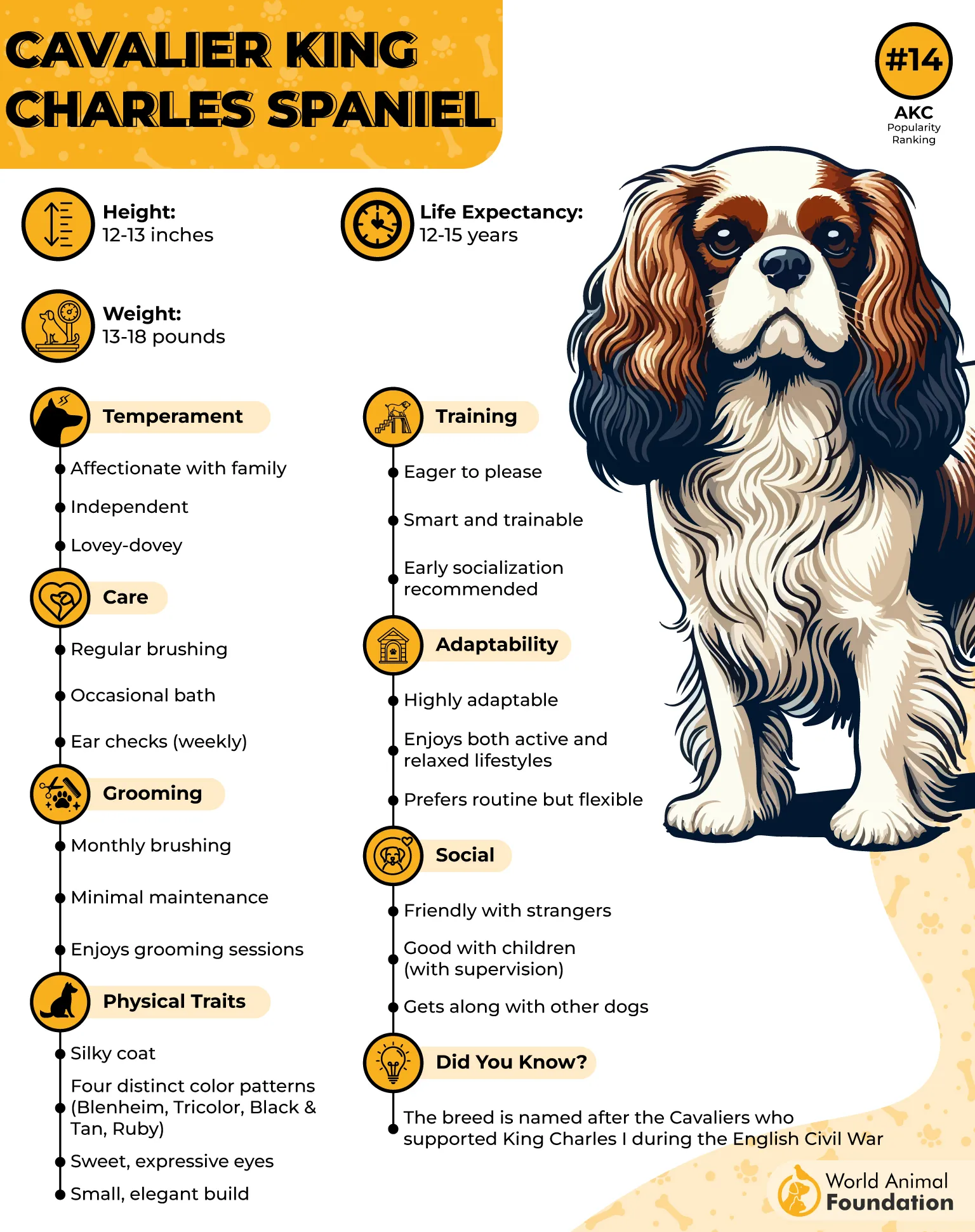
Cavalier King Charles Spaniels require frequent grooming to keep their coats mat-free and looking their best. They’re also prone to certain health issues, such as heart conditions, so regular veterinary care is important for long-term well-being.
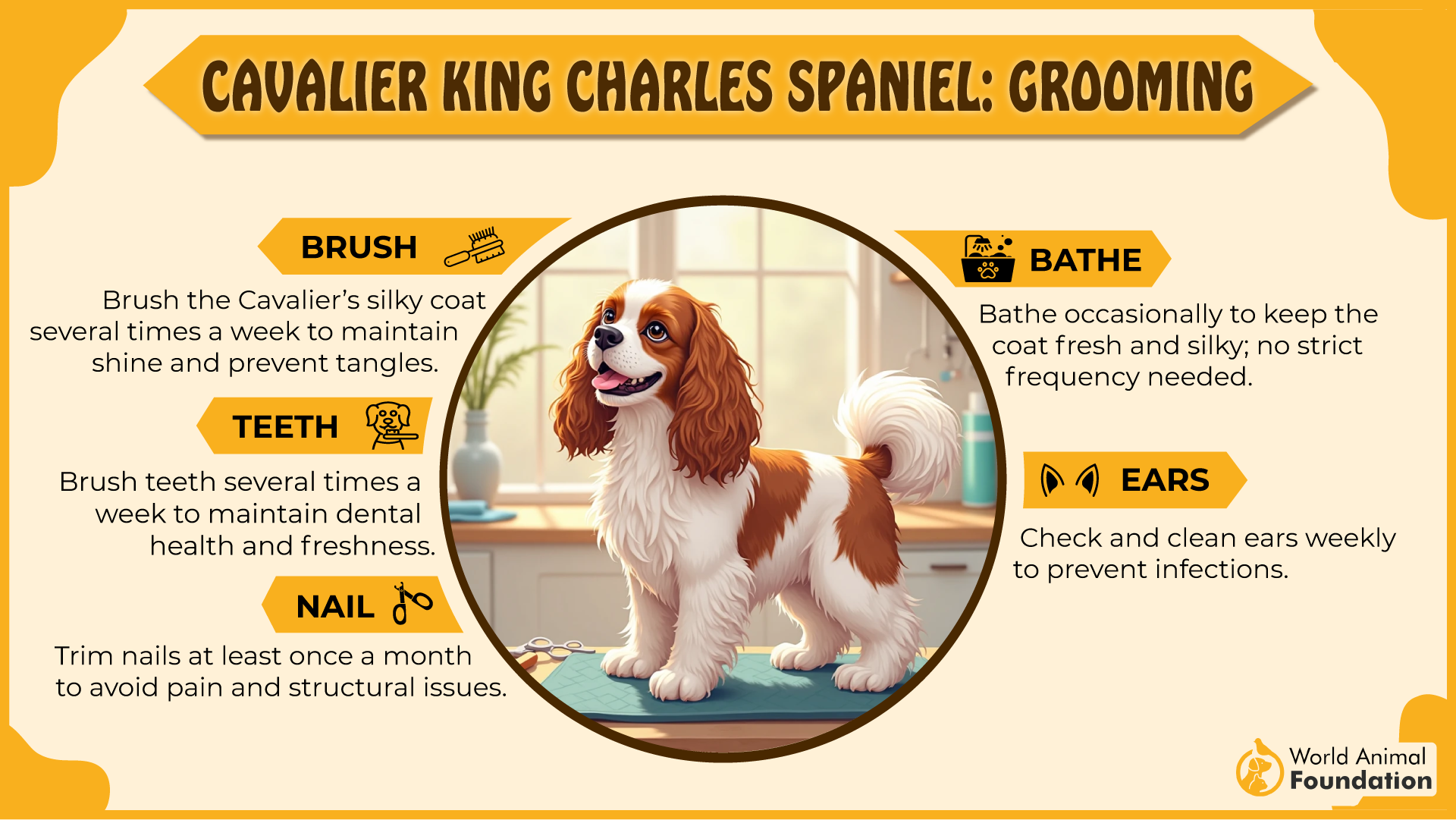
PDSA states that their eager-to-please attitude makes them responsive to gentle training and positive reinforcement, and they love learning new tricks, especially when children are involved. Socialization is effortless, as Cavaliers tend to be outgoing, friendly with visitors, and welcoming to new situations.
These dogs excel in therapy roles due to their intuitive, calm energy, and their adaptable nature makes them suitable for a variety of family dynamics.
Quick Tips
Brush their coat several times weekly to keep it healthy.
Monitor for signs of heart issues and discuss with your vet.
Encourage positive play to reinforce gentle behavior.
3. Shih Tzu
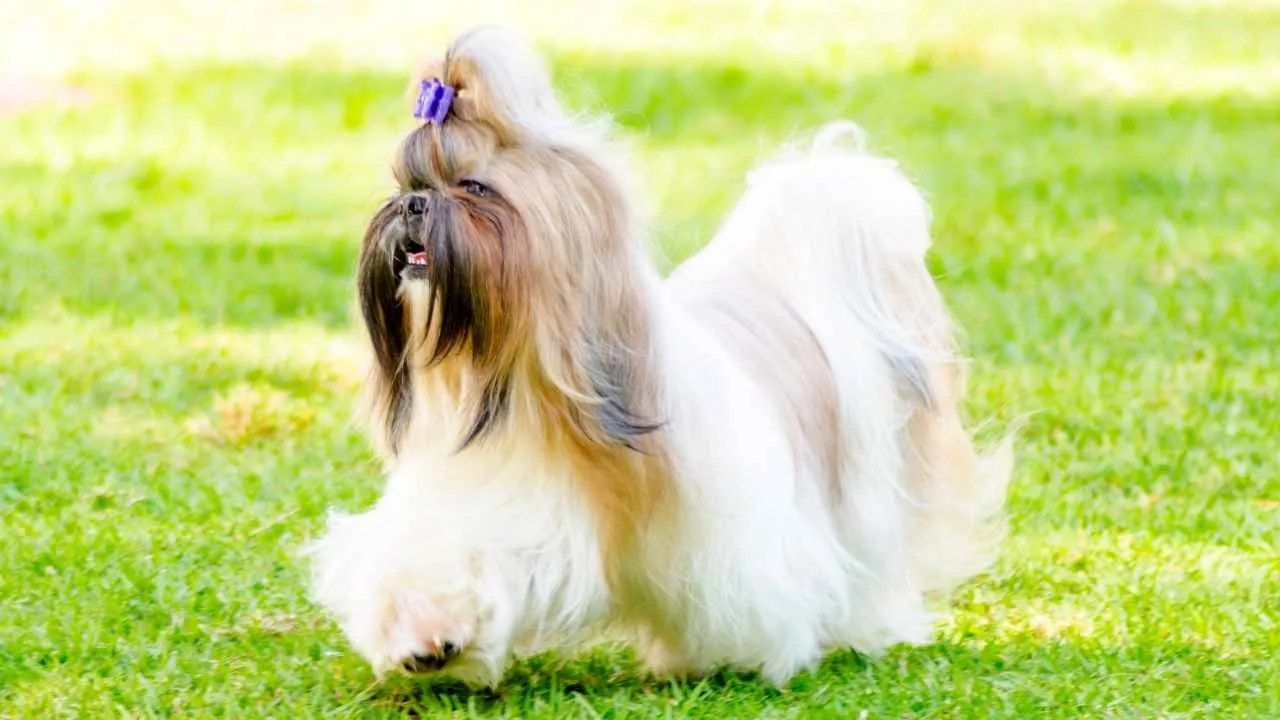
Shih Tzus are compact yet sturdy dogs, sporting luxurious coats and a friendly, alert expression that instantly appeals to children. Their history as royal lapdogs is reflected in their affectionate nature and love for close companionship. Shih Tzus relish family life, often following children around and wagging their tails in anticipation of shared fun.
This breed excels in gentle, interactive play and thrives on positive attention from all family members. Shih Tzus are patient and rarely display aggression, making them a safe choice for families with young kids.
Their adaptability allows them to transition seamlessly from playful activity to peaceful cuddling sessions, often choosing to curl up on a child’s lap or listen to story time.
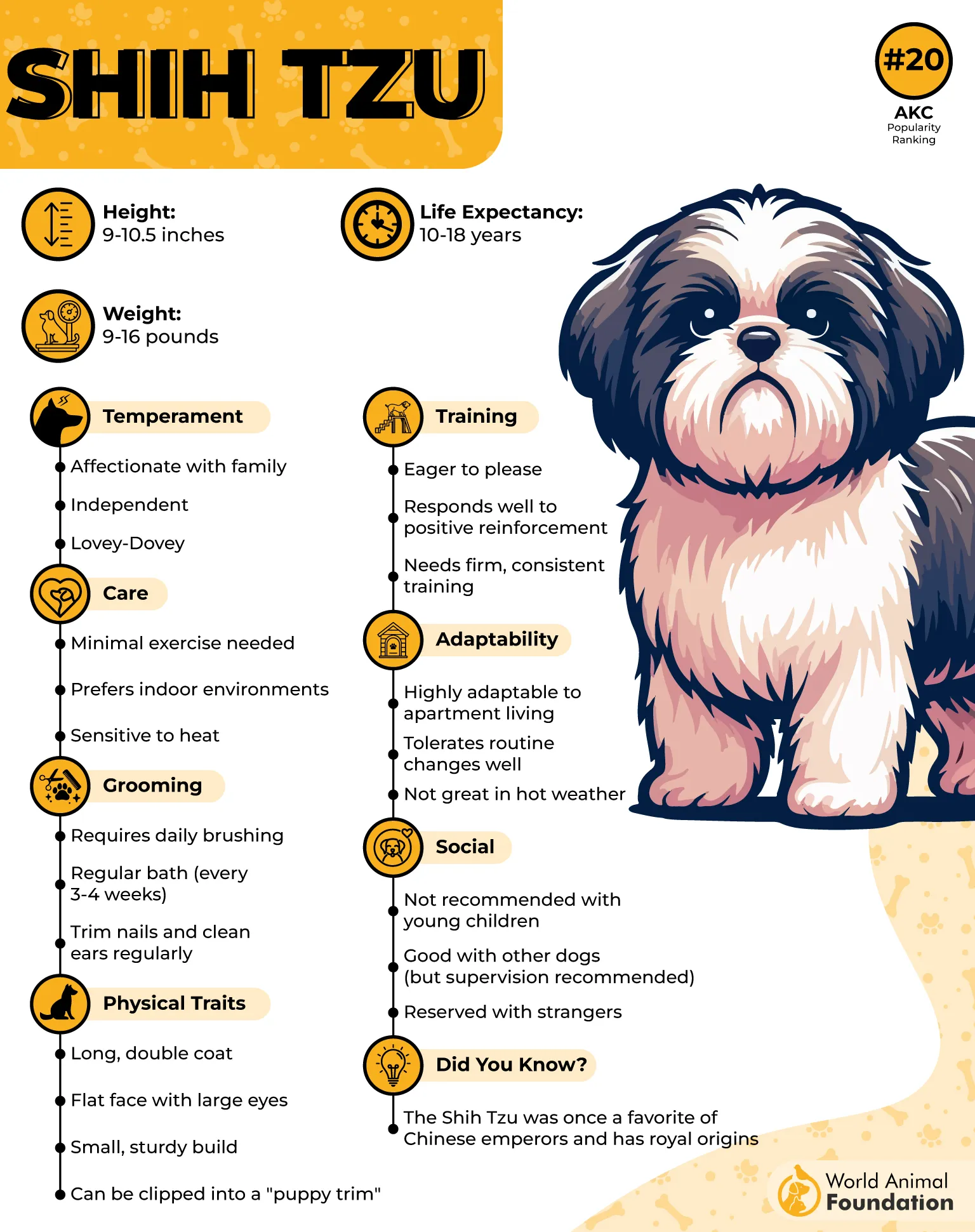
Shih Tzus require daily grooming to maintain their coat’s softness and prevent matting, and regular face cleaning is important to avoid tear staining. Their flat faces mean they should avoid overexertion, especially during warm or humid weather.
These dogs are alert but not overly yappy, usually reserving their barking for moments of true excitement or alerting the family to visitors.
Socialization from a young age encourages Shih Tzus to be friendly with both people and other pets, and they typically respond very well to patient, reward-based training.
Quick Tips
Daily brushing keeps their coat tangle-free and comfortable.
Protect them from heat and excessive exercise.
Use gentle training and early socialization for the best results.
4. Havanese
The Havanese charms families with its silky coat, cheerful eyes, and lively personality. They adore being in the thick of family life, and their tails wag enthusiastically at the sound of children’s voices. This breed thrives on companionship, often following kids from room to room.
Known for their intelligence and quick learning, Havanese enjoy interactive games and respond well to positive reinforcement.
Their playful, friendly attitude makes them adaptable to both apartments and large homes. Socialization comes naturally, as they’re welcoming to visitors and pets alike.
Havanese coats require frequent brushing to prevent tangling and keep them looking their best. They are hypoallergenic, which is a bonus for families concerned about allergies. Grooming sessions can be a fun way for children to bond with their furry friend.
This breed is lively yet gentle, matching its energy to the household environment. Havanese are eager to please, making training and new tricks a family affair. Their expressive tail wags and affectionate nature ensure they’re always a favorite playmate.
Quick Tips
Brush their coat several times a week for optimal health.
Socialize early for a confident, outgoing dog.
Offer puzzle toys to stimulate their intelligent minds.
5. Papillon
The Papillon is easy to recognize thanks to its distinctive butterfly-shaped ears and sparkling personality. These small dogs have boundless energy and quickly become playmates for children, wagging their tails in anticipation of every new game. Papillons are social butterflies, eager to meet people and pets.
Highly intelligent and alert, Papillons love learning tricks and excel in agility activities. They enjoy outdoor adventures as much as indoor play, adapting easily to family routines. Despite their size, they are robust and handle gentle play with kids very well.
As per PetMD, grooming is simple, with regular brushing keeping their coat sleek and their feathered ears tidy. Papillons are known for being clean and not having much of a doggy odor. Ear care is important to prevent infections, especially in active families.
Because Papillons thrive on companionship, they’re happiest in homes where someone is usually around. Their joyful, wagging tails and affectionate nature make them a natural fit for families who want a fun, interactive dog.
Quick Tips
Always supervise play with very young children.
Keep ears clean and dry to avoid infections.
Use interactive toys and training for mental stimulation.
6. Bichon Frise
The Bichon Frise is adored for its cloud-like coat, black button eyes, and merry disposition. Bichons form strong bonds with children, greeting them with excited tail wags and a playful bounce. Their gentle, affectionate nature makes them a reliable companion for kids.
This breed adapts well to smaller spaces and enjoys both active play and quiet time with the family. Bichons love being the center of attention and get along well with other pets. Their cheerful personality ensures there’s never a dull moment at home.
Regular brushing is needed to prevent mats and keep their coat soft and fluffy. Many families find that grooming sessions strengthen the bond between children and their Bichon. They’re also known for being relatively hypoallergenic, which benefits allergy-prone households.
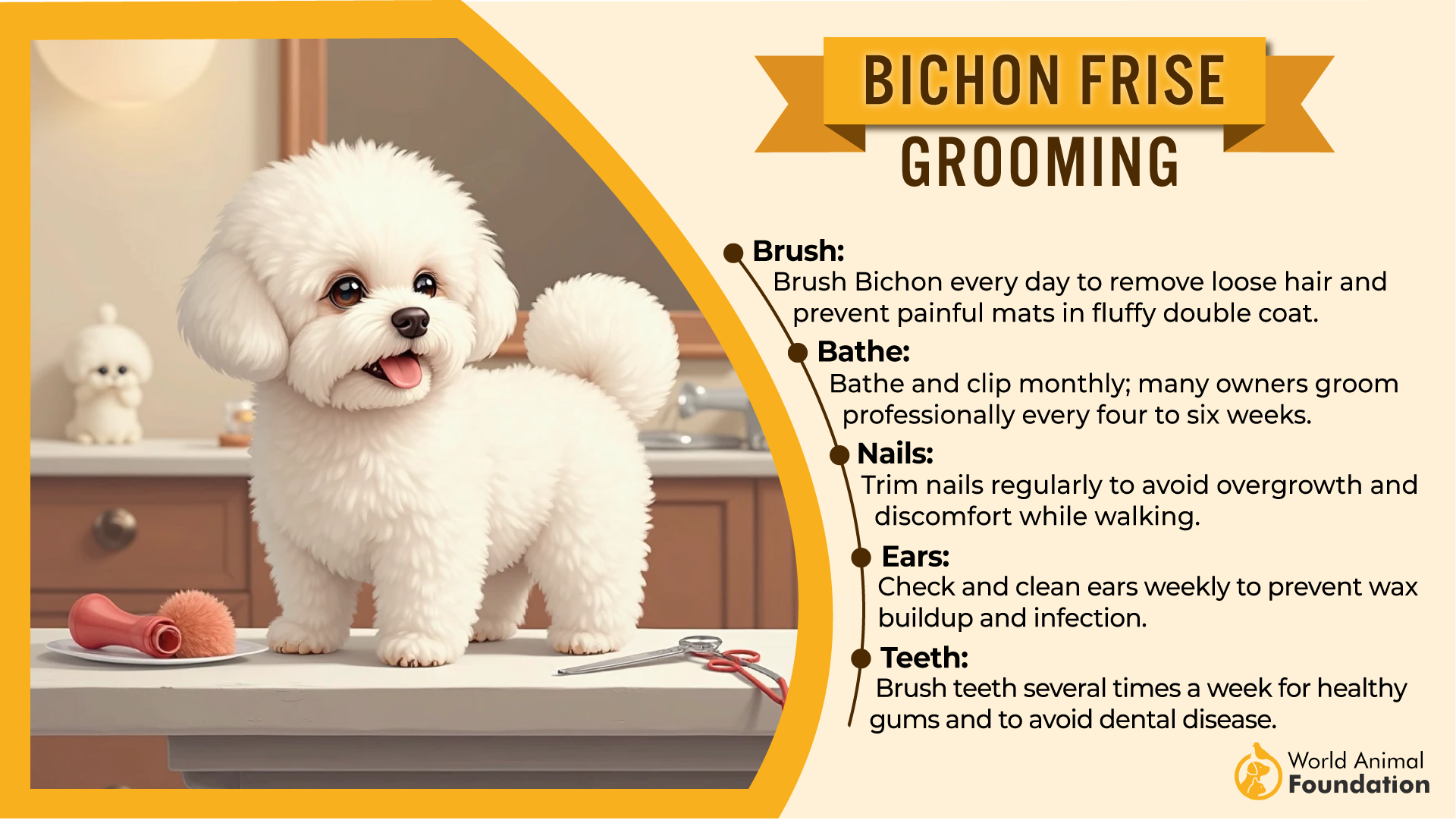
Bichons respond well to training that uses praise and treats, making them easy for kids to help teach. They are curious and sociable, enjoying outings and family events. The constant wag of their tails is a sure sign of a happy, contented dog.
Quick Tips
Brush daily to maintain their coat’s health and fluff.
Start training early with rewards and encouragement.
Monitor for common skin or allergy issues at vet visits.
7. Labrador Retriever
Labrador Retrievers are famous for their loyalty, intelligence, and friendly spirit. Their tails seem to wag constantly around children, showing their eagerness to play and be part of the family. Labs have a naturally patient and gentle temperament, which makes them ideal for homes with kids.
Labs love all forms of activity, from backyard fetch to swimming and hiking with the family. They quickly learn new commands and thrive when given tasks or games. Positive training works best, and they’re highly food-motivated, making lessons fun for everyone.
Their short coats require only basic grooming, but their ears need regular checks, especially after outdoor adventures. Labs are known for their sociable nature and often greet new friends—human or canine—with a friendly wag. They adapt well to both active and relaxed family lifestyles.
Daily exercise is essential to keep Labradors happy and healthy. Without it, they can become bored or overly energetic. Their enthusiastic tail wags and affectionate personality make them a favorite among children everywhere.
Quick Tips
Provide at least an hour of exercise each day.
Start obedience training early for good manners.
Clean ears regularly to avoid infections, especially if they love water.
Conclusion
There’s a unique kind of joy that fills a room when a dog wags its tail in response to a familiar voice, a new person entering, or even the simple thrill of a puppy chasing its paws across the living room. These moments—whether it’s a pup greeting you as you settle by the coffee table or a group of curious puppies meeting strangers in the park—highlight the genuine connection between animals and people.
Dogs have an incredible sense for reading our body language, picking up subtle cues in our scent, voice, and even the way we move through the snow or pause slightly before reaching for them.
Some dogs, with their keen instincts and boundless enthusiasm, may never ignore the approach of a friendly person, instead choosing to offer a wag, a nuzzle, or a happy twirl. It’s this instinctive, heartwarming response that makes sharing life with a dog so rewarding.
Whether your dog is a social butterfly who welcomes every new animal and stranger or a loyal companion who saves their most enthusiastic wags for family, these little rituals create memories that last a lifetime. In every joyful wag, you’ll find a world of communication—one that starts with the tail and travels through the whole body, connecting pup and person in a language all their own.


